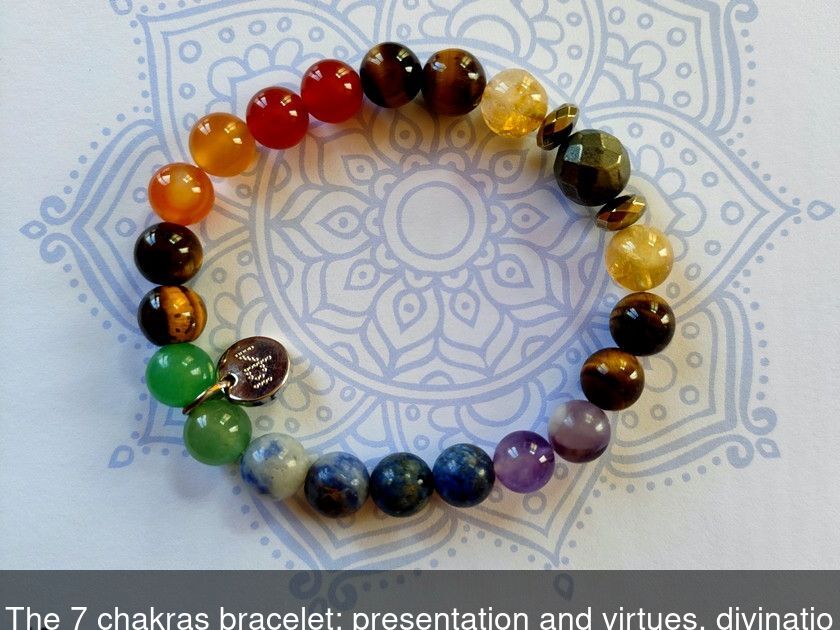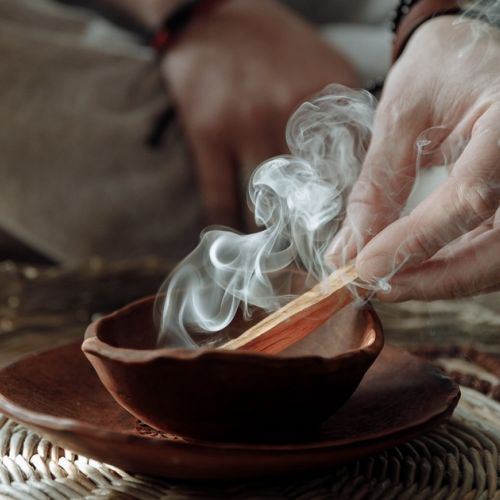The 7 Chakras Bracelet: Presentation And Virtues.
With the current enthusiasm of the general public for lithotherapy and natural stone bracelets, you may have already seen rainbow-colored bracelets in specialized stores. But do you know the meaning of these shimmering colors and the powers of this jewel? We invite you to discover the composition and virtues of the 7 chakras bracelet.
A jewel with energetic virtues.
The multicolored bracelets that can be found in lithotherapy shops do not combine stones of different colors for purely aesthetic reasons, but also for energetic reasons.
According to the principles of lithotherapy, each mineral is charged with a unique energy and emits vibrations capable of resonating with our bodies to regulate emotions, improve well-being, and nourish spirituality.
In the case of a 7 chakras bracelet, the stones used symbolize the 7 chakras or energy centers through their colors, in order to help the wearer strengthen and harmonize their vital energy.
A color for each chakra.
In traditional hatha yoga, the term "chakra" (which means "wheel" in Sanskrit) refers to an energy center. This ancient discipline believes that our physical body is indeed accompanied by an invisible energy body that can be influenced through the practice of yoga postures and breathing exercises.
Hatha yoga distinguishes seven main chakras located along the spine, from the coccyx to the top of the head. Each of these energy centers is associated with a name in Sanskrit and French, as well as a specific color.
Here is the list of the seven main chakras from the base of the spine to the top of the head:
- The root chakra or Muladhara, located in the pelvic area, associated with the color red.
- The sacral chakra or Svadhisthana, located in the lower abdomen, associated with the color orange.
- The solar plexus chakra or Manipura, located in the solar plexus area, associated with the color yellow.
- The heart chakra or Anahata, located in the chest, associated with the color green.
- The throat chakra or Vishuddha, located in the throat, associated with the light blue color.
- The third eye chakra or Ajna, located between the eyebrows, associated with the dark blue color.
- The crown chakra or Sahasrara, located at the top of the head, associated with the color purple or white.
All these colors are naturally found on a 7 chakras bracelet, where they are represented by different stones. This type of bracelet always includes at least seven natural stones of different colors, including red, orange, yellow, green, light blue, dark blue, and purple or transparent.
Variable stones from one model to another.
Even though the principle of this bracelet still consists of associating stones capable of resonating with the different energy centers of the body, in practice, you can find various models of 7 chakra bracelets.
At the time of purchase, if you want this bracelet to have a real influence on your well-being, you must first ensure the quality of the stones that make up your energy jewelry.
If the price of the bracelet is too low, it is likely that it is not made of genuine natural stones but a counterfeit. On average, you should expect to pay at least twenty euros for a good quality bracelet.
In order to benefit from the virtues of different beneficial stones, you can also buy them yourself in a specialized lithotherapy shop and make a homemade bracelet. In this case, find out about the compatibility between the different stones at the time of purchasing the beads.
Here are the stones generally used to symbolize the different chakras:
• Root Chakra: hematite, red jasper, or tourmaline
• Sacral Chakra: amber, carnelian, tiger's eye, or sunstone
• Solar Plexus Chakra: citrine, topaz, or yellow amber
• Heart Chakra: aventurine, jade, malachite, or green tourmaline
• Throat Chakra: fluorite, turquoise, or blue tourmaline
• Third Eye Chakra: lapis lazuli or azurite
• Crown Chakra: amethyst or clear quartz.
How to wear the 7 chakras bracelet?
There are no contraindications to wearing this type of bracelet. As this piece of jewelry is supposed to resonate with all the chakras, it possesses both preventive virtues (to stay in the best shape) and curative virtues (to treat mental or physical imbalances).
This bracelet, pleasant to look at and wear against the skin, can be worn on the left or right wrist.
If you wear it on the left side, it interacts with your well-being by reducing stress and bringing you more energy and creativity. If you wear it on the right side, it has a protective effect and helps you repel harmful influences from the outside.
Finally, like all jewelry and minerals used in lithotherapy, this type of bracelet needs to be purified and recharged regularly. To purify it, you can expose it to the vibrations of a Tibetan singing bowl or cover it with earth, then rinse it with water. You can then recharge it by exposing it to soft morning or late afternoon light.
Since this type of bracelet is composed of different minerals, it is best to avoid exposing it to direct sunlight or coming into contact with coarse salt, as they can alter the color of certain stones.



